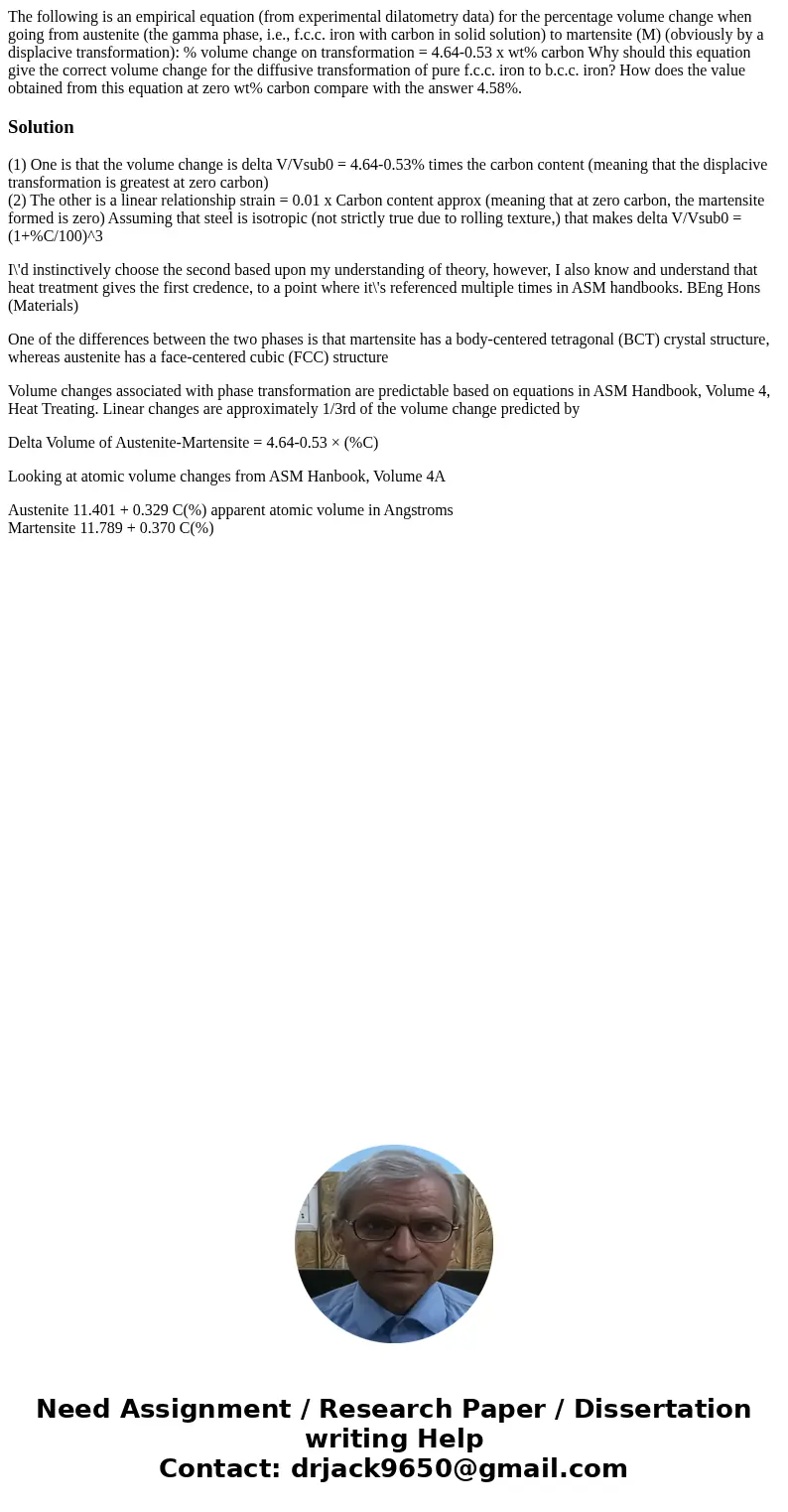The following is an empirical equation from experimental dil
Solution
(1) One is that the volume change is delta V/Vsub0 = 4.64-0.53% times the carbon content (meaning that the displacive transformation is greatest at zero carbon)
(2) The other is a linear relationship strain = 0.01 x Carbon content approx (meaning that at zero carbon, the martensite formed is zero) Assuming that steel is isotropic (not strictly true due to rolling texture,) that makes delta V/Vsub0 = (1+%C/100)^3
I\'d instinctively choose the second based upon my understanding of theory, however, I also know and understand that heat treatment gives the first credence, to a point where it\'s referenced multiple times in ASM handbooks. BEng Hons (Materials)
One of the differences between the two phases is that martensite has a body-centered tetragonal (BCT) crystal structure, whereas austenite has a face-centered cubic (FCC) structure
Volume changes associated with phase transformation are predictable based on equations in ASM Handbook, Volume 4, Heat Treating. Linear changes are approximately 1/3rd of the volume change predicted by
Delta Volume of Austenite-Martensite = 4.64-0.53 × (%C)
Looking at atomic volume changes from ASM Hanbook, Volume 4A
Austenite 11.401 + 0.329 C(%) apparent atomic volume in Angstroms
Martensite 11.789 + 0.370 C(%)

 Homework Sourse
Homework Sourse